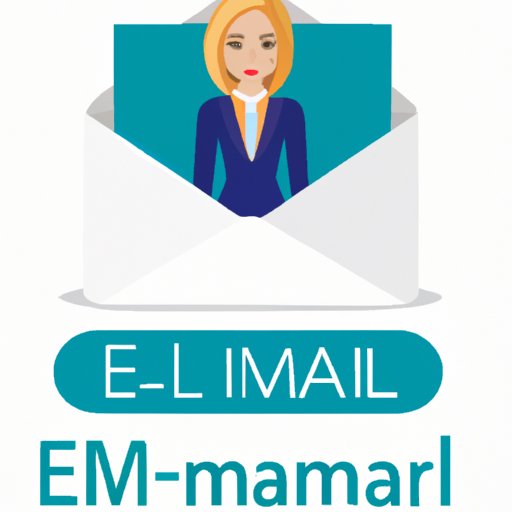Introduction
“Regards,” or “Sincerely?” “Best,” or “Cheers?” Ending an email properly is more important than you might think. How you end a professional email can set the tone for the entire message, and it can even affect how your recipient perceives you and your message. Therefore, it’s crucial to choose an appropriate and effective way to end your emails. In this article, we’ll talk about various options for ending a professional email, including formal, creative, and job-specific ways. Whether you’re drafting an email for work or for a job application, this guide will help you sign off with confidence and professionalism.
Formal options for ending a professional email
When in doubt, a formal sign-off is usually a safe bet. Here are some of the most common formal sign-offs you can use:
“Sincerely,”
“Sincerely,” is a classic sign-off that conveys a sense of respect and professionalism. It’s a safe option for most messages, but it can come off as a bit too formal for casual emails.
“Best regards,”
“Best regards,” is another formal sign-off that can be used in most professional contexts. It’s slightly more personable than “Sincerely,” and it conveys a warm and friendly tone.
“Yours truly,”
“Yours truly,” is a more personal sign-off that can be used when you have an established relationship with the recipient. It’s a way to express warmth and sincerity without being too informal.
When choosing a formal sign-off, consider the context of your message and who you’re sending it to. For instance, if you’re emailing someone you’ve never met before, “Sincerely,” might be a more appropriate choice. If you’re replying to a co-worker’s email, “Best regards,” might be a better fit.
Creative and personal options for ending a professional email
If you work in a less formal industry or you have a creative job, you might want to inject some personality into your sign-off. Here are a few ideas:
“Thanks a bunch!”
“Thanks a bunch!” conveys gratitude and friendliness. It’s a good option for casual messages or when you’re trying to establish rapport with someone.
“Take care,”
“Take care,” is a more personal sign-off that conveys concern and warmth. It’s good for messages to people you know well or when you want to express empathy.
“Cheers,”
“Cheers,” is a popular sign-off that’s often used in the UK and Australia. It’s a fun and informal way to end an email, but it might not be appropriate for every context.
While creative and personal sign-offs can be a fun way to express yourself, be careful not to come off as unprofessional or too informal. If you’re unsure whether a sign-off is appropriate, it’s best to stick with a formal option.
Job-specific recommendations for ending a professional email
Different industries and professions have their own conventions for professional emails. Here are some examples of appropriate sign-offs for various professions:
For lawyers:
“Respectfully,” is a sign-off that conveys respect and professionalism. It’s a good choice for legal emails, which often require a more formal tone.
For marketers:
“Looking forward to working with you!” is a sign-off that conveys enthusiasm and excitement. It’s a great way to foster a positive relationship with clients or partners.
For healthcare professionals:
“Warmly,” is a sign-off that conveys empathy and understanding. It’s a good fit for healthcare professionals who often communicate with patients and their families.
When in doubt, research what sign-offs are common in your industry or profession. You can also ask your colleagues or supervisor for guidance.
Dos and Don’ts for ending a professional email
When ending a professional email, there are certain things you should avoid. Here are some dos and don’ts:
Do keep it concise.
Avoid long-winded sign-offs that take up too much space. Keep it short and sweet.
Do be polite and professional.
Avoid using offensive language or coming across as rude or dismissive. Be polite and respectful in your sign-off.
Don’t use clichés.
Avoid overused phrases like “Looking forward to hearing from you” or “Thanks in advance.” These can come across as insincere or unoriginal.
Don’t be too casual.
Avoid using slang, emojis, or overly casual language in your sign-off. It’s important to maintain a professional tone in your emails.
Sign-offs by context
Finally, it’s important to tailor your sign-off to the context of your email. Here are some examples of tailored sign-offs:
Emails to colleagues:
You can be a bit more casual with colleagues who you know well. For instance, “Thanks!” or “Have a great weekend!” can work well.
Emails to external partners:
When emailing someone outside of your organization, it’s best to be more formal. “Best regards,” or “Sincerely,” are good options here.
Job application emails:
If you’re applying for a job, a more formal sign-off like “Sincerely,” or “Thank you for your consideration,” is appropriate.
Conclusion
In conclusion, ending a professional email might seem like a small detail, but it can make a big difference in how your message is received. By choosing an appropriate and effective sign-off, you can ensure that your emails convey the right tone and professionalism. Whether you prefer formal, creative, or job-specific sign-offs, there are options for every context and situation. Just remember to keep it polite, concise, and professional, and you’ll be on your way to signing off with confidence.
